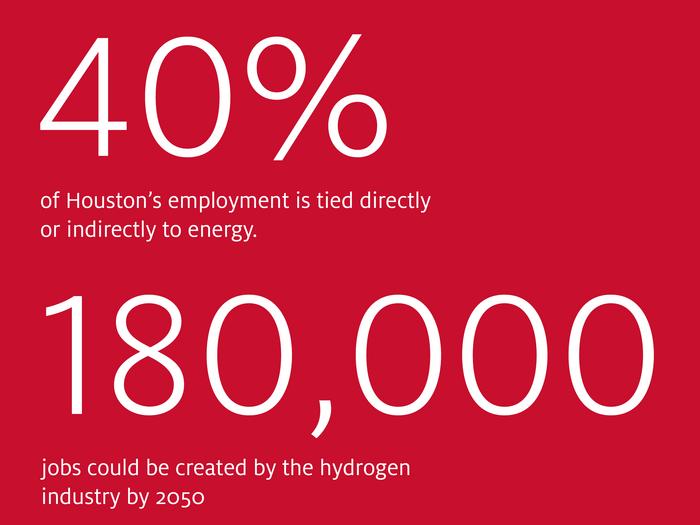The greater Houston area, home to more than 4,700 energy companies, stands at a critical juncture.

Credit: Please credit the University of Houston.
The greater Houston area, home to more than 4,700 energy companies, stands at a critical juncture.
Energy, especially oil and gas, has been fundamental to the region’s economy, contributing a quarter of its gross domestic product. Houston-area leaders now face the challenge —and opportunity— of redefining and sustaining the region amidst a global shift towards low-carbon energy solutions. This transformation, driven by the urgent need to mitigate climate change, promises to reshape the area’s economic landscape and workforce. The emerging hydrogen ecosystem alone is expected to create about 180,000 new jobs in the greater Houston area, offering an average annual income of approximately $75,000.
The University of Houston –The Energy University – is studying the challenges and considering ways to leverage opportunities presented by these changes.
UH Energy’s workforce analysis found that the greatest workforce gains occur with an all-of-the-above energy strategy, balancing electrification and increased attention to renewables with liquid fuels, biomass, hydrogen, carbon capture, utilization and storage commonly known as CCUS, and carbon dioxide removal. This would support both economic and employment growth, leveraging skilled workers from traditional energy sectors like coal, oil, and natural gas, which may lose jobs during the transition.
“To sustain the Houston region’s growth, it’s important that we broaden workforce participation and opportunities,” said Ramanan Krishnamoorti, vice president of energy and innovation at UH. “Ensuring workforce readiness for new energy jobs and making sure we include disadvantaged communities is crucial.”
Under his direction, UH’s Division of Energy and Innovation brought together key stakeholders from industry, academia and the community to explore the topic, leading to a collaborative white paper, titled “Workforce Development for the Future of Energy.”
The white paper underscores the critical need for collaboration among government, academia, community and industry groups to address the workforce challenges and successfully meet the needs associated with this significant shift.
Key Findings and Recommendations:
- Partnering for Success: For maximum impact, industry leaders should partner with secondary schools, post-secondary institutions, and training organizations to ensure training opportunities focus on the real-world skills required. This proactive engagement will help develop a well-prepared workforce for emerging energy sectors.
- Hands-On Training Programs: Internships, apprenticeships, and pre-apprenticeships have proven highly effective in providing practical, paid training opportunities. Increased funding and encouragement of these programs are essential for equipping workers with the necessary skills.
- Flexible Education Pathways: Diverse training approaches are needed, including industry-led training, educational institution programs, and community-based training, to ensure everyone has the opportunity to participate. Training must address both new entrants and current workers needing reskilling and/or upskilling, fostering continuous learning and skill development.
- Comprehensive Support Services: Training programs alone will not be enough. Funding and expanding wrap-around support services, such as childcare, transportation, and financial aid, are crucial for addressing barriers and enabling a diverse and inclusive workforce.
- Early and Ongoing Outreach: Initiatives like career fairs and STEM outreach programs should begin early, ensuring students and their families are aware of future career opportunities and the steps needed to achieve them well before high school graduation.
“The greater Houston area’s journey towards a low-carbon future is both a challenge and an opportunity. The region’s ability to adapt and lead in this new era will depend on its commitment to collaboration, innovation, and inclusivity,” Krishnamoorti said. “By preparing its workforce, engaging its communities, and leveraging its industrial heritage, we can redefine our region and continue to thrive as a global energy leader.”
To read the white paper, please click here.
This project was paid for, in part, with federal funding from the Department of the Treasury through the State of Texas under the Resources and Ecosystems Sustainability, Tourist Opportunities, and Revived Economies of the Gulf Coast States Act of 2012. The statements, findings, conclusions, and recommendations are those of the author(s) and do not necessarily reflect the views of the State of Texas or Department of the Treasury.



